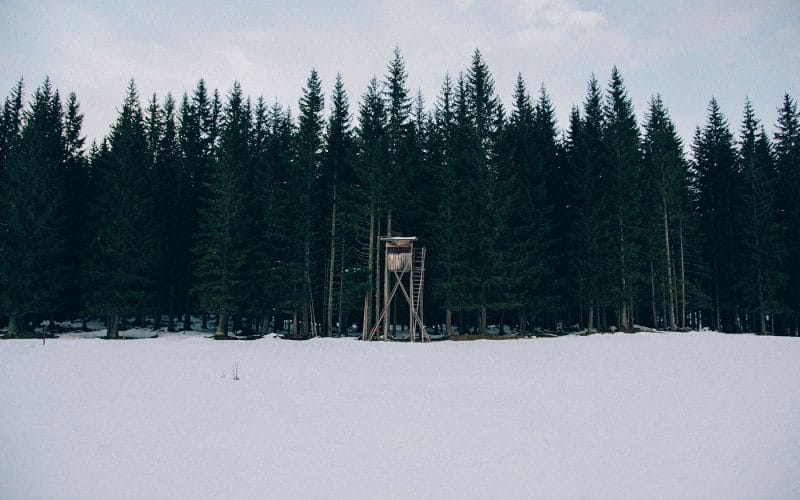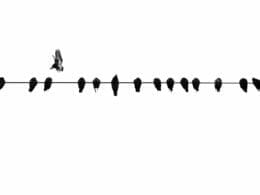If you’ve come across an abandoned or injured baby nuthatch and you’re trying to care for it until a wildlife rehab center takes it in, or if you’re just curious about those little birds, this article is for you. So what do baby nuthatches eat?
Like other baby birds, baby nuthatches require a protein-rich diet. So, baby nuthatches can eat small insects, nuts, and seeds brought in by the parents. At home, you can feed them mealworms, canned dog food, moistened dog biscuits, raw liver, and hard-boiled eggs.
What do Parent Nuthatches Feed their Offspring?

Nuthatches often adjust their diets, and that of their hatchlings, according to the available food sources at the time.
In summer, Nuthatches eat mainly insects including weevil larvae, wood-boring beetle larvae, other beetles, treehoppers, scale insects, gall fly larvae, caterpillars (including gypsy moths and tent caterpillars), stink bugs, click beetles, as well as other arthropods such as spiders, ants, and earwigs. Consequently, they raise their babies on these foods.
Author Note: In fall and winter insects aren’t as available, so their diet switches to conifer seeds and nuts. This includes acorns, hawthorn, sunflower seeds, crops such as corn, and seeds they gathered earlier in the year.
Nuthatches also eat from feeders containing peanuts, peanut butter, sunflower seeds, and suet.
What Diet is Most Appropriate for Baby Nuthatches?
According to experts, if you find yourself having to feed a baby bird, then you should try and imitate its natural diet as closely as possible. Feeding baby nuthatches follows the same rule.
Like most baby birds, they get all the nutrients and fluids necessary for healthy growth from eating protein-rich insects and grubs. As such, your easiest option would be going down to the local pet store and buying something called ‘mealworms’.
This type of pet food is usually meant for geckos and other reptile pets, but it’s very beneficial for baby birds too. Mealworms are loaded with nutritional value and they offer a high water content.
With mealworms, you probably won’t need to use the dropper to give water, which eliminates the risk of accidentally allowing fluid to enter the bird’s lungs.
What Foods Can You Give a Baby Nuthatch?
The exact type of food one should feed a baby nuthatch – or any baby bird for that matter- isn’t set in stone. There are many opinions flying out there, but most experts agree that no matter the food you give a baby nuthatch, it should contain the nutrients required to ensure healthy growth.
Different breeds of adult birds stick to different diets (some mostly eat insects, others primarily feed on seeds and berries), however, the vast majority of baby wild birds share almost identical needs and should be given food that’s rich in protein content.
The same goes for baby nuthatches. You’re clear to feed them hard-boiled eggs, moist dog food, raw liver (without seasoning), moistened dog biscuits, and moistened dog or cat kibble.
Here are a couple of starting recipes for feeding a baby nuthatch:

Recipe #1
An excellent basic recipe for a recently hatched wild bird like a nuthatch consists of 60% puppy or kitten kibble, 20% hard-boiled eggs, and 20% mealworms (you can buy those online or from your local pet store).
Don’t forget to moisten the kibble with water until it reaches a sponge-like consistency. Don’t overdo it to the point where it drips water as baby nuthatches can choke or drown in the excess fluid.
You should also cut the hard-boiled eggs and mealworms into pieces small enough for the baby bird to swallow.
Recipe #2
Another great recipe for feeding a baby nuthatches consists of:
- 1 can wet dog food (or 2 cups of dry dog food moistened and mashed)
- 1/2 cup poultry mash (this is a terrific source of calcium and other essential vitamins)
- 1/4 cup applesauce
- 1 tablespoon of finely chopped hard-boiled egg
What Foods Should You Not Give a Baby Nuthatch?

Right off the bat, don’t give a baby nuthatch water. Typically, water shouldn’t be given orally to any baby bird because the fluid is likely to enter and fill their lungs, causing them to drown.
Additionally, you should not feed a baby nuthatch bread or milk. A lot of people make this mistake when caring for baby birds and often end up harming them.
You see, birds aren’t like mammals – they can’t digest milk. It’s not a part of their natural diet so they’ll be intolerant to it.
As for bread, it’s just a bunch of empty calories that won’t provide the baby bird with nearly enough nutrients to survive.
Whatever food you give the baby nuthatches, you should serve it at room temperature – nothing hot or cold.
Additional examples of foods that you shouldn’t give baby nuthatches include:
- Worms
- Pet bird food
- Kitchen scraps
- Whole birdseed
How often do Baby Nuthatches Eat?
Author Note: Baby nuthatches, like most baby birds, eat quite frequently. They usually have very demanding feeding schedules where their parents make hundreds of feeding trips every day, and you need to live up to that.
Ideally, you should feed a baby nuthatch every 15 to 30 minutes from sunrise to sunset.
You can use a pair of dull tweezers, plastic forceps, a syringe, a pipette, or an eye-dropper for feeding. The more mature the baby nuthatches are, the longer it can go between feedings and the more “adult” food it can eat without risk.
How to Feed a Baby Nuthatch
Using a proper feeding technique helps ensure that the baby nuthatch will get the necessary nutrition to survive.
In general, all baby birds should be fed very carefully. Ideally, you want to use either a pair of dull tweezers or plastic forceps for feeding.
If you don’t have any of these available, then you can try using a chopstick that’s narrow enough to fit in the bird’s mouth.
- To start feeding, grab a little bit of food with the tweezers or forceps or take some on the edge of the chopstick then drop it into the bird’s mouth directly. If you’re worried about the food going down the wrong way, you shouldn’t because the bird’s glottis will close on its own when feeding.
- If the baby nuthatch’s mouth isn’t opening, tap its beak gently with the feeding instrument or rub the food lightly around the edge of its beak. This will help the baby bird understand that it’s time to eat.
- If the bird still won’t gap its mouth, you’ll need to gently and carefully force it open.
- Continue feeding the baby birds until it starts rejecting the food or becomes less eager to open its beak.
- Be mindful of how much food you’re giving the baby bird. Avoid overfeeding it.
Tips for Feeding a Baby Nuthatch

Here are a few important tips to keep in mind when feeding baby nuthatches:
- Offer foods that have a spongy consistency.
- Do not offer food that’s dripping with water because the excess fluid could cause the bird to choke or drown.
- All dry food should be softened before being offered to baby nuthatches.
- Food should be offered at room temperature only. Do not warm the food, heat it, refrigerate it, or chill it.
- Feed the bird little bits of food in proportion to its size. The smaller the birds, the smaller the bites they need.
- Mash, cut, or crush the food to suit the baby bird’s size.
- While feeding the baby nuthatch, give it as little food as possible each bite to minimize the risk of additional stress or injury.
- Never use too much force to pry the bird’s beak open for feeding. Always be gentle.
- Keep the bird warm. This is important to get it to eat. Wrap the baby nuthatch in a towel and put it under your shirt close to your skin.
- Do not feed the bird when it’s cold. It’s not that it won’t eat, it just won’t be able to digest the food. In this case, feeding could do more harm than good.
- Do your best to create a low-stress environment for the baby nuthatch. Like most baby birds, it won’t thrive and feed unless kept in calm, low-stress conditions.
Wrap Up
So what do baby nuthatches eat? In nature, they feed mainly on insects brought in by the parents, including weevil larvae, wood-boring beetle larvae, other beetles, treehoppers, scale insects, gall fly larvae, caterpillars (including gypsy moths and tent caterpillars), stink bugs, click beetles, as well as other arthropods such as spiders, ants, and earwigs.
Author Note: Parents may also bring in seeds and nuts. This includes acorns, hawthorn, sunflower seeds, crops such as corn, and seeds they gathered earlier in the year. At home, you can feed them mealworms, canned dog food, moistened dog biscuits, raw liver, and hard-boiled eggs.
Remember that feeding a baby wild bird should only be an emergency measure. If you find one that’s abandoned and needs care, contact or take it to a bird rescue organization as soon as possible.
Experts there will help baby birds learn how to find food, escape predators, and various skills required for a successful life in the wild.
Fly high friends!
FAQ
No. The chances of survival for any baby bird being reared by humans is low and by an inexperienced human it is practically zero. It needs to be looked after by experts. Refer to your local rescue center.
There are 4 species – the White-breasted and Red-breasted, as well as the Pygmy and Brown-headed Nuthatch.
Firstly, because there are more available and secondly, because the high protein levels in bugs helps the chicks grow quickly.










